BULLETIN BOARD - LATEST NEWS


31 May 2019
DVA - Better Access for Veterans and their Families
CLICK HERE DVA - Better Access for Veterans and their Families
02 Apr 2019
Computer Based Trials to Assist Veterans Leaving the Military
| 01 Apr 2019 11:43 AM AEST - Chester Media Release - Computer-based trial designed to assist veterans leaving the military | |||
|
1 April 2019
COMPUTER-BASED TRIAL DESIGNED TO ASSIST VETERANS LEAVING THE MILITARY COMPUTER-BASED tasks will form the basis of a trial program to assist Australian Defence Force (ADF) personnel as they transition from military to civilian life, Minister for Veterans’ Affairs Darren Chester said today. "The Stepping Out: Attention Reset (SOAR) trial is designed to test whether a brief attention training computer task improves adjustment to civilian life and may reduce the risk for mental health disorders," Mr Chester said. "Open Arms—Veterans & Families Counselling (formerly VVCS) and Phoenix Australia are partnering with representatives from Tel Aviv University to conduct the research nationally. "Any current full-time ADF members who are transitioning from service in the next 12 months can participate in the trial. "Our Government is putting veterans and their families first and provides more than $11.2 billion each year to deliver the essential services and programs they rely on. If you have served one full day in the Australian Defence Force you and your family can access free mental health care, through Open Arms – Veterans & Families Counselling, whether that condition is service related or not. "About 5,500 people leave the ADF each year with most transitioning well, but for some there may be additional support needed. Our Government is committed to improving the transition services and programs ADF members and their families need, when and where they need it. "Military training teaches you to pay close attention to your environment and the things that could be a potential threat – in many military settings this training is life-saving. Once you leave the military, if your attention is not re-balanced to suit a civilian setting, adjustment issues or mental health problems may develop. "The findings from the study will play an important role in the Government’s action on improving veterans’ mental health and is just one of the many programs the Government is using to ensure veterans and their families receive the best possible support." To sign up to take part in the trial, visit the SOAR trial website www.soar.phoenixaustralia.org.au, phone 1800 945 089 or email [email protected]
ENDS MEDIA CONTACTS:
| |||
29 Aug 2018
As It Happened: An Aircrew Experience by Fred Barnes
Click Here to View As It Happened: An Aircrew Experience by Fred Barnes Document
As It Happened: An Aircrew Experience by Fred Barnes
Click here to view older News items
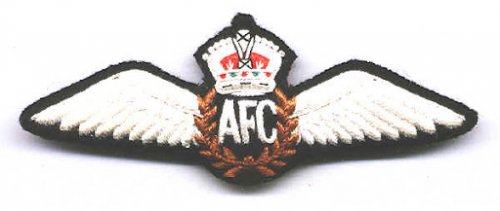

07 Jul 2018
Air Commodore Garrisson OBE. Australian Fighter Aces
Click Here to View Air Commodore Garrisson OBE. Australian Fighter Aces Document

No 78 Squadron

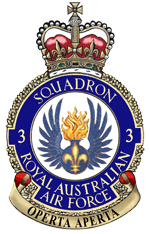
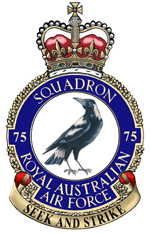
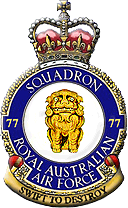
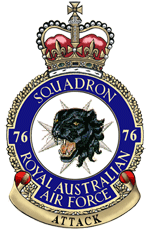
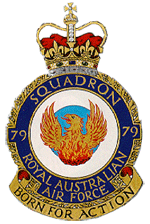

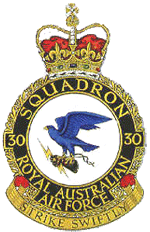
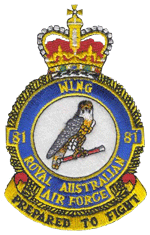
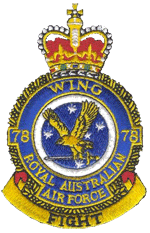


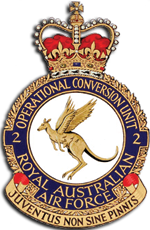
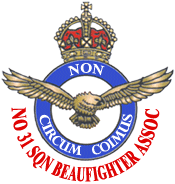
About Fighter Squadrons Branch
FROM WHENCE IT SPRUNG
Since WWII, a number of individual and independent associations sprouted to accommodate the needs of ex-members. Those associations were largely squadron-centric owing to the members' (mostly WWII veterans) strong sense of connection and identity with their particular squadrons. In 1971, the “Kitty Hawk Squadrons' Association” was formed as an offshoot of the original "No 77 Squadron Association" which was established in June 1953.
Since the mid-sixties, however, this strength of identity has diminished to a degree because of more diverse involvement with several squadrons and/or aircraft types.? In 1976 the “Kitty Hawk Squadrons' Association” was renamed the “NSW Fighter Squadrons Branch”. That was the first attempt to establish a "combined association" concept. Such a change not only broadened the scope of membership by excluding reference to aircraft type, but based on the logic that the common thread was their fighter squadron heritage, it was envisaged that this organisation could fulfil the needs of camaraderie for all older and younger-generation members who served within the many fighter squadrons in existence.
WHAT IS IT
The Fighter Squadrons' Branch (FSB) is now a fully established branch of its parent body namely "The Australian Flying Corps and Royal Australian Air Force Association (New South Wales Division) Incorporated" - or RAAFANSW. Naturally, all members of the FSB are fully subscribed members of the RAAFANSW.
The FSB is not an independently constituted, incorporated or otherwise, organisation. Accordingly, the statutory functioning of the FSB is fully governed by the constitution of RAAFANSW. There is no provision in the RAAFANSW constitution for its branches to spawn sub-branches.
The broad charter of the FSB is to:
- foster ongoing camaraderie among all members past and present of the fighter squadrons community;
- promote welfare of and assistance to members of the branch and their dependents;
- disseminate relevant information from RAAFANSW and/or other sources;
- plan, coordinate and conduct reunions, formal and social events;
- maintain a website with both public and private access segments; and
- provide limited financial assistance to kindred and affiliated organisations and groups.
IMPLEMENTATION
In 2003, following requests from some of the independent associations, the FSB committee established and formalised the “umbrella” concept - a concept where the FSB sits in a focal position relative to a cluster of individual and independent squadron associations, thus providing a linkage for embracing the fighter squadrons' fraternity as a whole.
In late 2004 the Fighter Squadrons Branch website was launched, with the home page graphically illustrating implementation of this concept. From an original eight associations, some twelve groups now populate this cluster.
During the following years FSB operated in a supportive rather than a governance sense in respect of the members of the independent associations. The passage of time however took its toll in these associations and governance positions became more difficult to fill.
Since 2011 major constitutional changes within RAAFANSW have fertilised progressive management concepts and IT leading to the establishment of websites and better communication capabilities for the division and branches alike.
These changes enabled branches to conduct their own membership management, previously undertaken at division level, permitting independent associations to merge with FSB whilst retaining their squadron identities as chapters within FSB if they wished.? This arrangement now retains the aforementioned "umbrella" concept and allows wider scope for all members to enjoy the collective benefit of the branch as a whole whilst perpetuating chapter initiatives in respect of history recording and collection of memorabilia.
Membership of the Fighter Squadrons Branch is open to past and present members of Fighter Squadrons.
Friends and associates of the fighter community, persons with connections to Williamtown and Amberley air bases and persons with a genuine interest in military aviation are also eligible and welcome to join.
Applications to join are made through RAAFA NSW website https://raafansw.org.au/membership.php
| PRESIDENTS: | |
Alwyn Quoy |
1969 - 1985 |
| Hon Secretary: Geoff Peterkin Mob: 0406 186 926 Email: [email protected] |
|


























